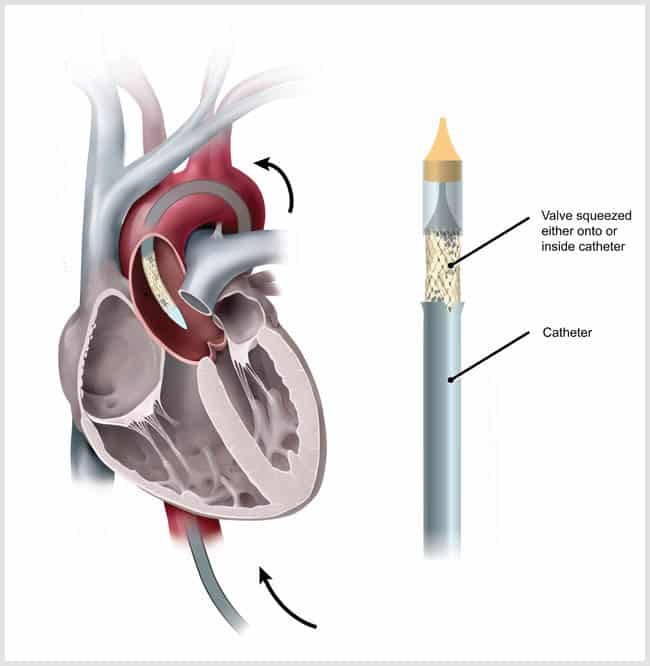
TAVI is a procedure to improve a damaged aortic valve.
The process has to take place in a well-equipped operation theater of Cath Lab, where you can be operated upon with local or general anesthesia. This being a very minimally invasive procedure the amount of anesthesia will be decided by the surgeon. You might just get medicines to relax if you are given local anesthesia to suppress the pain during the procedure.
A balloon catheter is inserted through an incision in your groin or near your collar bone which will be guided towards the aortic valve. Then the balloon is inflated to open up the valve by the doctor. Then the doctor implants the new aortic valve using a metal mesh tube that holds the valve in place.
The new valve is either self-expanding or needs to be expanded depending on the type of valve being implanted. The new valve pushes aside the damaged aortic valve and functions as the valve. Once the process is done the balloon will be deflated and the catheter removed. You may need some hospitalization for monitoring and recovery as advised by your medical consultant.



A TAVI is recommended to people who have a problem with the aortic valve or aortic stenosis. This procedure is done on patients who are considered weak to endure open-heart surgery. Your aortic valve and blood vessels are of appropriate size for the TAVI process.
TAVI process may not be recommended in case where other medical conditions may prevent the patient from experiencing the benefits of TAVI therapy or having some risk factor involved which may overweigh the benefits. A TAVI process will be recommended by the surgeon taking into consideration the medical and personal factors prior to deciding on the treatment plan.

